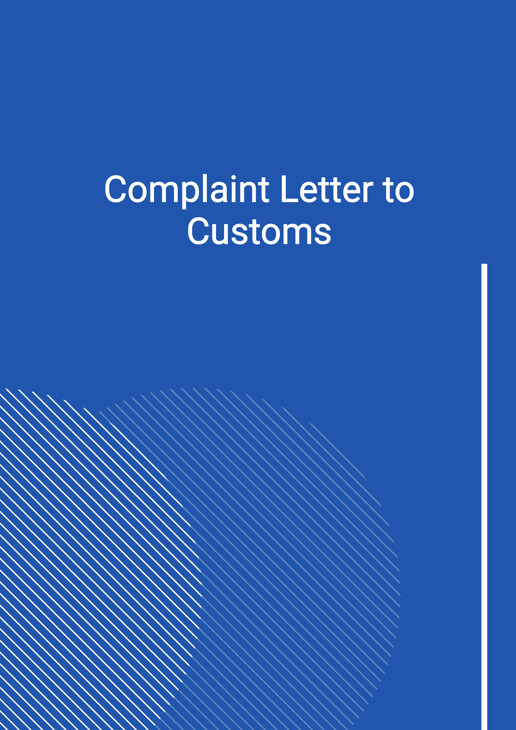How to Tailor the Document for Your Need?
01
Create Document
Click "Create Document" button and the document will be prepared with your account details automatically filled in.
02
Fill Information
Please fill in any additional information by following the step-by-step guide on the left hand side of the preview document and click the "Next" button.
03
Get Document
When you are done, click the "Get Document" button and you can download the document in Word or PDF format.
04
Review Document
Please review the document carefully and make any final modifications to ensure that the details are correct before sending to the addressee.
Document Preview
Document Description
The document titled 'Complaint Letter to Customs' is a formal letter written to the customs and excise department of a city/region/country to lodge a complaint regarding the possession and sale of false trademark goods. The letter is addressed to the relevant department and includes the sender's account information, such as their name, address, and email. The purpose of the letter is to report the illegal activity of selling counterfeit goods and request appropriate action from the customs authorities.
The letter begins with a polite salutation, addressing the recipient as 'Dear Sirs.' It then proceeds to provide a detailed account of the incident. The sender explains that on a specific date, while walking along a particular address, they observed the possession and sale of false trademark goods. The sender emphasizes the importance of including as much information as possible in the complaint, such as the duration of the illegal activity, the methods used for selling the counterfeit goods, the source of the products, and any evidence of transactions or supporting evidence.
The sender urges the customs department to take prompt action based on the complaint. To support their claim, the sender has enclosed pictures of the false goods along with images of the legitimate goods for comparison. The sender concludes the letter with a polite closing, expressing their appreciation for the customs department's prompt action.
Overall, the 'Complaint Letter to Customs' is a formal document that serves as a means for individuals to report the possession and sale of counterfeit goods to the customs and excise department. It provides a detailed account of the incident, includes supporting evidence, and requests appropriate action from the authorities.
How to use this document?
Guidance for using the 'Complaint Letter to Customs':
1. Gather information: Collect all relevant details about the possession and sale of false trademark goods, including the date, location, and specific observations.
2. Include account information: Fill in your account information, including your last name, first name, address, and email, at the beginning of the letter.
3. Address the recipient: Address the customs and excise department by their proper name and location.
4. Describe the incident: Clearly explain the incident in detail, mentioning how long it has been going on, how the false trademark goods are being sold, and how they are obtained.
5. Provide evidence: Attach any evidence you have, such as pictures of the false goods and images of the legitimate goods for comparison.
6. Request action: Politely request the customs department to take appropriate action based on the complaint.
7. Express appreciation: Conclude the letter with a polite closing, expressing your appreciation for their prompt action.
Note: It is essential to ensure that all information provided is accurate and truthful. The letter should be written in a professional and formal tone, maintaining proper etiquette throughout.
Not the right document?
Don’t worry, we have thousands of documents for you to choose from:




